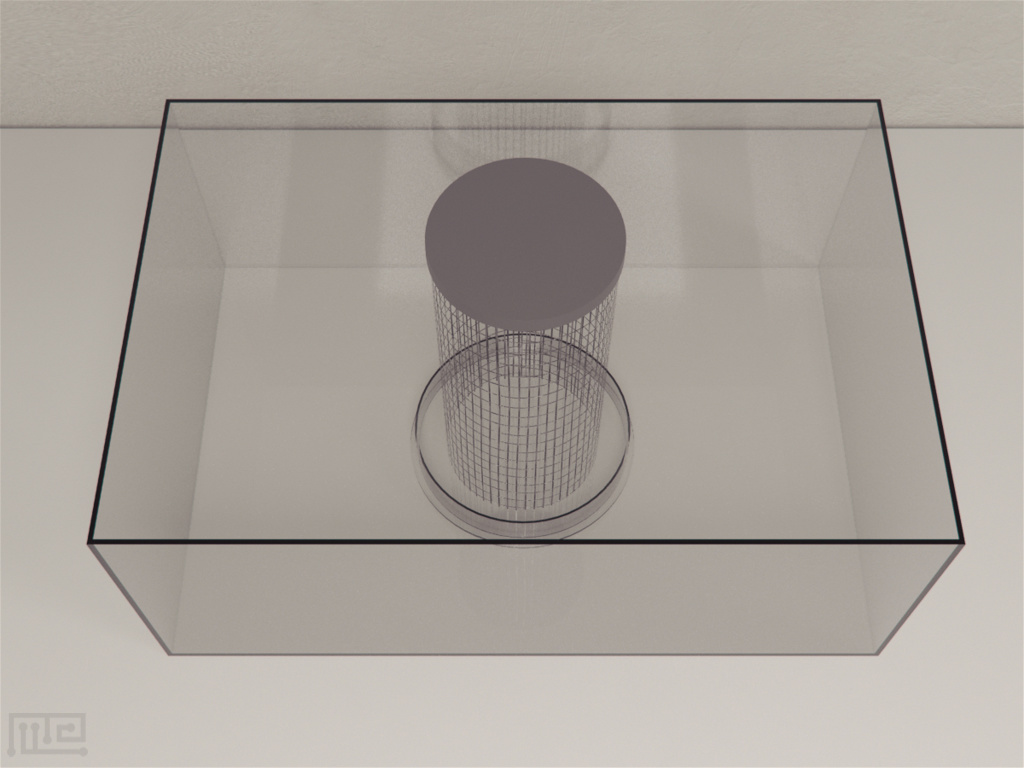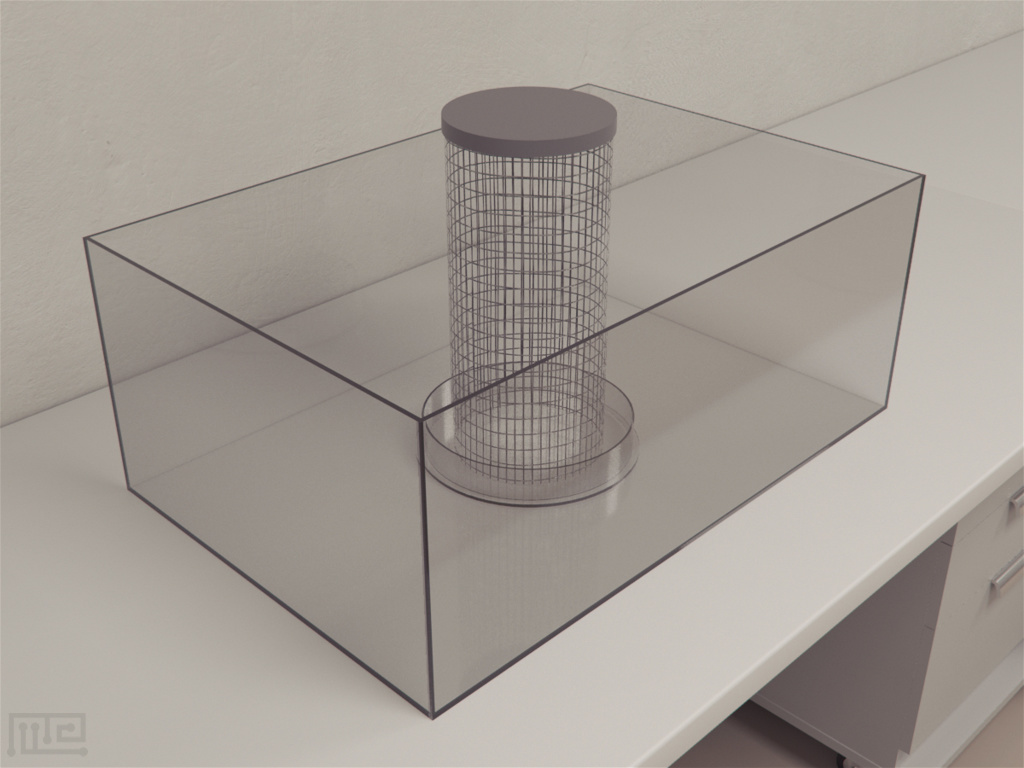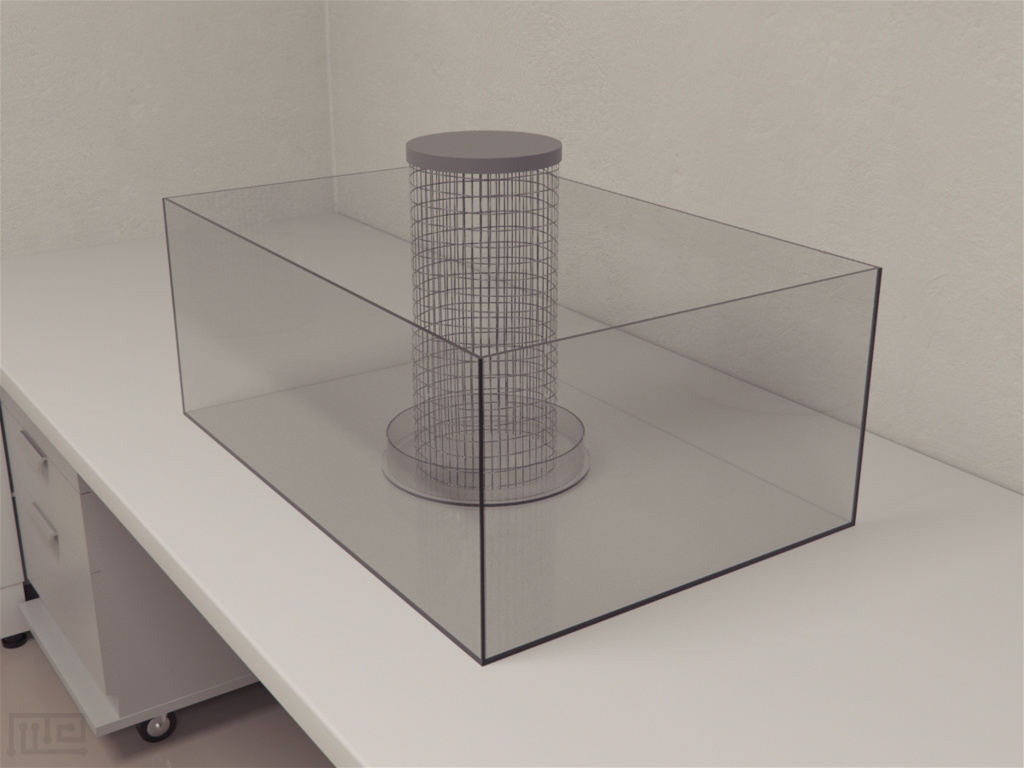The Pawedness Trait Test (PaTRaT) is designed to observe the degree of pawedness in rodents and its association with neural behaviors like motor activity, cognition, impulsivity, and memory. The PaTRaT apparatus is based on preference paradigm allowing the subject to use any of its paws for manipulating the food reward during the experiment. The preference for using right or left arm is linked with monoamines’ asymmetry and dopaminergic activity found in an individual’s brain (Barnéoud, Moal, & Neveu, 1990).
The PaTRaT is available from MazeEngineers in both Mouse and Rat forms
Price & Dimensions
Mouse
$ 1790
one maze- Height of Cage: 26 cm
- Diameter of Cage: 12.0 cm
- Grid opening: 0.75 cm x 1.5 cm
- Receptacle Height: 2.5 cm
Rat
$ 1890
one maze- Height of Cage: 40 cm
- Diameter of Cage: 17.5 cm
- Grid opening: 1.1 cm x 2.2 cm
- Receptacle Height: 4 cm
Documentation
Introduction
In comparison to the previously used tests, such as the Collins and the Lateral Paw Preference tests, the Pawedness Trait Test offers increased motivation to the subjects for performing the task. While other tests focus only on the exclusive left or right paw usage, PaTRaT, in addition, to exclusive usages of either paw also quantifies possible intermediate movements. The intermediate pawedness demonstrated by the rats in the PaTRaT furnishes results closer to the handedness in human. The preferential use of right or left paw is graded according to an advanced classification system in the PaTRaT.
The PaTRaT apparatus consists of a circular grid separating the rodents from the food rewards. The size of the mesh is smaller than the size of the reward so that the subject is forced to use multifarious dexterity for reward retrieval. Other apparatus used for studying motor activity and coordination in rodents are Skilled Forelimb Test, Stairway Test, Static Rods Test, and Grid test.
Apparatus & Equipment
The Pawedness Trait Test apparatus consists of an open-top plexiglass box. A 40 cm long mesh wire cylinder is set in the middle to confine the subjects. The diameter of the cylinder is 17.5 cm. The grid holes of the wire mesh measure 1.1 cm x 2.2 cm. The base of the cylinder is provided with a 4 cm high and 2 cm wide reward holder on the outside. The entire apparatus is placed on a supporting base measuring 50 cm x 75 cm.
Training Protocol
Clean all apparatus and equipment thoroughly before and after trials with 10% ethanol. Conduct the experiment in a controlled environment. An external tracking and recording systems such as the Noldus Ethovision XT can be used to record the subject’s behavior.
Pretraining
Place the subject in the apparatus and confine it in the mesh cylinder. Place food rewards in the food reservoir. Allow the subject to familiarize with the apparatus and the reward using two different sessions of 10 minutes each. Follow the familiarization training with one or two motivation training sessions of 15 minutes. For these sessions place a single food reward close to the mesh cylinder and allow the subject to retrieve it. Perform 2 daily sessions separated by an interval of at least 4 hours.
Testing Procedure
Place the trained test subject in the apparatus and confine it in the gridded cylinder. Place the food rewards in the reservoir attached to the bottom of the cylinder. Allow the subject 10 minutes to retrieve 10 rewards from the holder into the cylinder through the grid. Observe the paw or paws used by the subject for the manipulation of each reward. Repeat the procedure for the remaining trained subjects.
Investigation of the degree of dexterity using PaTRaT
Cunha et al. (2017) analyzed the degree of dexterity and pawedness in rats using male Sprague- Dawley rats in the PaTRaT apparatus. Four sessions, each of 10 minutes, were conducted by letting the subject retrieve the food rewards from outside the mesh cylinder. The subject was observed for handedness bias towards the right and left paws. Of the 24 rats evaluated in 40 trials, 11 showed consistent left paw preference across time while the remaining 13 showed right paw preference. Thus, an almost equal distribution of the right and left bias could be observed among the subjects.
Data Analysis
The following observations can be made using the Pawedness Trait Test:
- Handling with right paw
- Handling with left paw
- Handling with both paws
Pawedness in the Pawedness Trait Test is classified on a scale of +4 to -4 where the positive and the negative values reflect the preference of left or right paw respectively. The values on the scale are reflective of the increasing preference of the paw as shown below:
| Rating | Interpretation |
| 0 | Absence of exclusive paw preference and final withdrawal with the mouth |
| 1 | Handling with both paws and final withdrawal with either left or right paw |
| 2 | Handling with one paw but retrieval with the other paw |
| 3 | Exclusive usage of preferred paw followed by withdrawal with the mouth or almost exclusive usage of the preferred paw |
| 4 | Exclusive usage of the preferred paw |
Strengths & Limitations
Strengths
The Pawedness Trait Test is a simple and easy to construct. PaTRat apparatus offers better motivation to the subjects by allowing them to see, smell and touch the rewards. In the PaTRaT apparatus, the subject is not constrained and can freely use both paws, thus allowing observation of unbiased pawedness. The larger size of the reward as compared to mesh grid forces the subject to show complex dexterity for reward retrieval. The results produced by PaTRaT are reliable and reproducible.
Limitations
The results obtained using the Pawedness Trait Test are highly dependent upon the training of the subjects. The test does not reflect the impact of natural factors, such as starvation and stress, on the subjects. The environmental conditions (humidity and photosensitivity) need to be closely monitored and maintained during the experiment. Any changes in environmental specifications may affect the pawedness in subjects.
Summary & Key Points
- The Pawedness Trait Test assesses the dexterity level, and paw preference in rodents.
- PaTRaT presents a simple and inexpensive method of testing pawedness and produces fast results.
- Pawedness is related to the asymmetry in dopamine and other neurotransmitters levels in the brain.
- The degree of pawedness is recorded to study its association with behavioral patterns in rats such as cognition, memory, fine motor activity, and impulsivity.
- The PaTRaT apparatus is based on preference protocol allowing the rodents to use both their paws simultaneously.
- PaTRaT is based on classifying the preferential usage of right or left paw in a specific grading system ranging from +4 to -4.
References
Barnéoud, P., Moal, M. A., & Neveu, P. J. (1990). Asymmetric distribution of brain monoamines in left- and right-handed mice. Brain Research, 520 (1-2), 317-321. doi:1016/00068993(90) 91721-R
Cunha, A. M., Esteves, M., Neves, S., Borges, S., Guimarães, M. R., Sousa, N., Leite-Almeida, H. (2017). Pawedness Trait Test (PaTRaT)—A new paradigm to evaluate paw preference and dexterity in rats. Frontiers in Behavioral Neuroscience, 11(192), 1-9. doi: 10.3389/fnbeh.2017.00192



